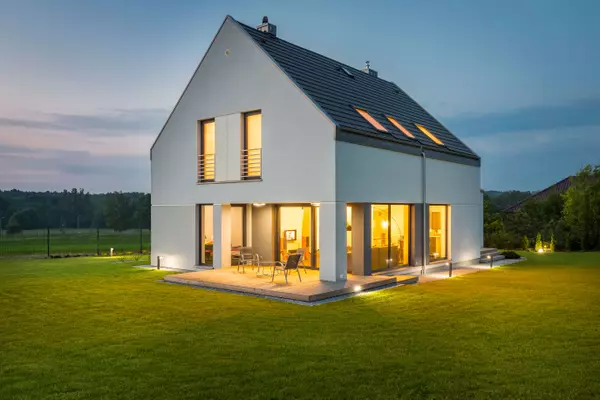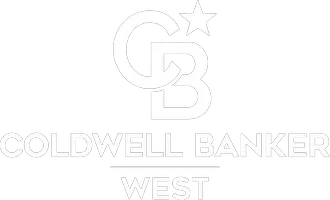San Diego will consider major subsidy for Midway Rising’s sports arena project
The city of San Diego is open to offering the Midway Rising development team substantial financial assistance to make possible the redevelopment of the city’s sports arena real estate in the Midway District.
Monday, San Diego City Council members voted unanimously to explore the formation of what’s known as an Enhanced Infrastructure Financing District or EIFD. The action means the city and its real estate consultant will take a closer look at the pros and cons of creating a tax increment financing district to pay for public infrastructure in and around the project area.
The decision, while preliminary, signals that council members are willing to trade future general fund dollars to secure thousands of rent-restricted apartments for San Diegans.
“To meet the magnitude of this development and ensure that we are maximizing the public benefits of the plan, this kind of financing mechanism may be needed,” said Councilmember Jennifer Campbell, who represents the Midway District and neighboring communities. “While this does not include details at this time, this is a way to create improvements to our infrastructure in Midway, which could lead to more investment in this community with Midway Rising in the center of it all. So this may give us more help for a promising future for that part of our city.”
In September 2022, City Council members selected Midway Rising to redo the city’s 48-acre property at 3220, 3240, 3250 and 3500 Sports Arena Blvd. The project, currently in the midst of its state-mandated environmental review, calls for 4,250 residential units, a 16,000-seat replacement arena, up to 145,000 square feet of commercial space, and an unspecified number of acres of parks, plazas and public space.
Midway Rising is comprised of market-rate housing developer Zephyr, sports-and-entertainment venue operator Legends and affordable housing builder Chelsea Investment Corp. The Kroenke Group, a subsidiary of billionaire Stan Kroenke’s real estate firm, is the development entity’s lead investor and limited partner.
The team has promised to set aside 2,000 of the project’s residential units for low-income households earning 80 percent or less of the area median income. The affordable housing commitment, which served as the basis for the team’s selection, is now an obligation memorialized in the team’s negotiation contract with the city.
The rent-restricted units, however, are the most difficult to finance. An Enhanced Infrastructure Financing District, which could help offset construction costs, makes possible the unprecedented sum of subsidized units included in the project, the developer said.
“This is an innovative financing tool that allows us to support this low level of affordability within this really brand new neighborhood that we’re creating,” Erin Autry Montgomery, who works with Chelsea and is in charge of the project’s public financing strategy, told the Union-Tribune. “Affordable housing usually has a gap. So how do you finance those gaps? We seek federal, local and state funding to fill those gaps. When we have the EIFD, we have an ability to help finance the infrastructure associated with the community and our specific projects with this larger tool. So it keeps our plan on track to get these units done as fast as possible.”
Enhanced Infrastructure Financing Districts were enabled in California in 2014, two years after the dissolution of redevelopment agencies. They do not require voter approval. They are formed by one or more of the affected taxing entities and governed by their own boards.
Once established, an EIFD captures the incremental growth in property tax dollars, above a zero-year baseline, within the geographic boundaries of a defined area. Tax increment dollars can then be used to pay the debt service on bonds or applied to specific infrastructure projects. EIFDs can be used to finance parks, libraries, roads, transit centers, waste water systems and even affordable housing projects.
The relatively new public financing tool is growing in popularity. In 2017, San Diego’s City Council established an EIFD for the entirety of the Otay Mesa community plan area to pay for infrastructure associated with the region’s massive growth. The city and county are also in the midst of forming an EIFD to raise money for upgrades to the San Diego River.
In the case of the Midway Rising project, the city of San Diego and potentially the county would participate in the EIFD, with the agencies forgoing their respective share of future property tax dollars, above an established baseline, collected within the district’s boundaries. The boundaries would likely match the project’s boundaries, although nothing has been decided.
“This is not a new revenue stream, but property tax revenue that otherwise would go to the city’s general fund,” Richard Eyre, who works in the city’s finance department, told council members. “All taxing entities continue to receive property tax revenues derived from base-year assessed value. It is the revenue generated by incremental growth above the base year that is allocated to the EIFD.”
The city and developer did not provide any information to help quantify how much money might be on table. However, they did acknowledge that the project would be in jeopardy without the public subsidy.
“This project is not financially feasible without getting some of the infrastructure paid for,” Brad Termini, CEO of market-rate housing developer Zephyr, told the Union-Tribune.
Termini said Midway Rising is the largest affordable housing project in the state’s history, making it worthy of the investment. And the money in question would only exist as a result of the new development, he said.
“This is really about taking a tax increment that is derived from the private investment that we’re going to make in Midway Rising and being able to use it locally, to help be a catalyst for affordable housing and to produce infrastructure that the entire community benefits from,” Termini said.
Christina Bibler, who heads the city’s real estate department and is leading negotiations with the development team, told council members that the EIFD is a “worthy exploration.”
“(Midway Rising) is a very large project with a lot of different needs related to financing. This will probably be the most complicated financing structure that (the City Council) will see,” Bibler said. “(The EIFD) is a very important (financing mechanism) that will generate a significant amount of revenue.”
Council members spoke approvingly of the idea. Several noted that all of the development teams that participated in the sports arena real estate competition were contemplating the financing mechanism. The topic did come up during the selection process, but it has never been discussed in detail with the general public. At the time, the city, citing the need to protect negotiations, did not disclose with specificity any of the financial assumptions, ground lease terms or anticipated subsidies proposed by the teams.
“The EIFD has been contemplated from the beginning,” Councilmember Stephen Whitburn said. “The revenue from an EIFD is revenue generated from the development itself. It does not impact other revenues that would be generated by the project. … The economic impact from the jobs created and so forth would continue to inure to the benefit of the city. And, importantly, 2,000 units of income-restricted affordable housing would not be financially possible without financial assistance from government agencies in various forms.”
Nearly three dozen people spoke during the public comment portion of Monday’s council meeting. Most of the speakers were directly or indirectly affiliated with the project, associated affordable housing service providers or local labor unions. They centered their remarks on the city’s need for housing for low-income families and seniors.
“There are tens of thousands of seniors that are in substandard housing, who are just barely hanging on because they can’t afford the rent,” said Paul Downy, CEO of the nonprofit Serving Seniors. Serving Seniors provides meals and housing assistance to seniors and is partnered with Chelsea on the Midway Rising project. “The 2,000 affordable units in this project are needed today. The 2,250 market-rate units are needed just as urgently. So anything that can be done to expedite bringing these units to fruition as quickly as possible I would urge you to support.”
A handful of speakers were critical of the proposed financing mechanism.
“I’m totally flummoxed by this. Midway Rising won this bid. Are they telling you they can’t build this housing for low-income residents without this enhanced (infrastructure) financing district?,” said Paul Krueger. “That’s money that would go to infrastructure. Every time you do this, you take away money by putting it specifically here.”
The EIFD exploration process will take place alongside ongoing negotiations between the city and the development team. The parties hope to bring a development deal to the city council for approval before the end of the year.
Categories
Recent Posts










GET MORE INFORMATION


